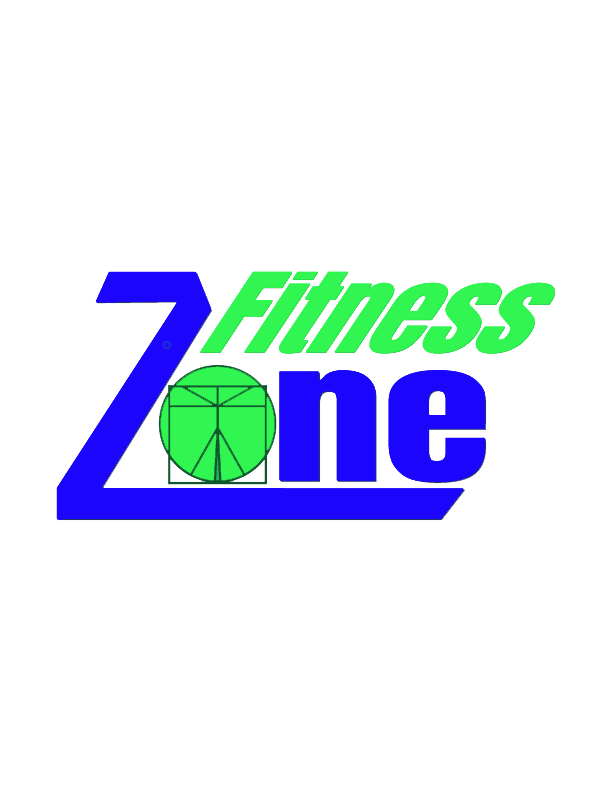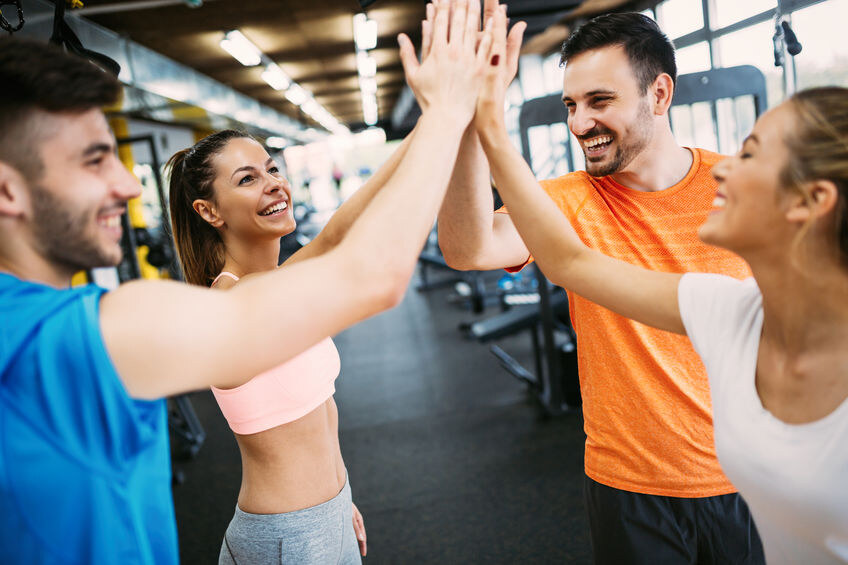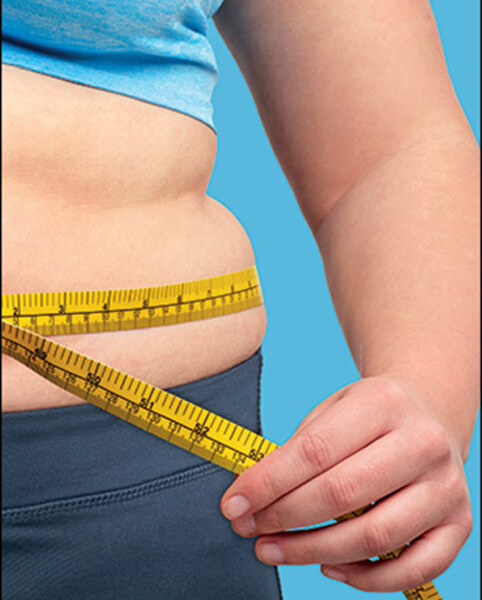10 Commandments of Fatherly Fitness
Once upon a time I was a badass. Ran a sub-six-minute mile. Benched over 300. Competed in kickboxing and jiujitsu and won. I was high speed, low drag, and aerodynamically efficient. But that was once upon a time.
Being a grownup changed all that. More hands on my time left less time for the gym. A body in its 40s doesn’t build muscle or burn fat like the one I had two decades ago. My joints hurt more. Everything takes longer to recover from.
But that’s no reason to give up on fitness. Study after study, after study demonstrate that our bodies are a “use it or lose it” situation. The longer we stay active, the longer we remain able to stay active.
In the vein of “I make mistakes so you don’t have to,” here are 10 commandments of fitness for men as they enter middle age. If you follow them, your body will thank you well into retirement.
1. Thou shalt not skip the fitness warmup
As we age, our muscles and tendons become less flexible and more subject to injury. A solid 10- to 15-minute warmup of light motion (not static stretching, which can actually cause damage when done cold) helps counteract that unavoidable truth. It’s time to start thinking of the warmup not as a thing you do before the workout, but rather the first part of the workout.
2. Thou shalt not be too busy for fitness
Middle age is a demanding time. Kids, a spouse, a job, your community, and maybe a minute for a hobby conspire to leave very few hours in the day for you to spend on fitness. But you have to make it happen. Here are a couple of strong options:
- Exercise early in the morning, before things go wrong with your day that could impinge on your workout time.
- Make exercise a necessary part of your daily routine. For example, bicycle to work.
- Exercise with your family (I do jiujitsu with my son) to combine quality time with exercise.
- Find a workout buddy who will harass you into showing up even when it’s hard.
3. Thou shalt focus on flexibility
Flexible muscles and resilient joints will prevent you from sustaining a sidelining injury you may not fully recover from. The best way to insure them is to build in a cooldown stretching routine lasting 10 to 20 minutes at the end of your workout. Stretching while muscles are warm is a flexibility-force multiplier. Take advantage of it.
4. Thou shalt not ignore it
Two advantages of being a grown adult are (often) having decent health insurance and being old enough that your doctor will listen to you. If you experience pain, go get it checked out. The days of “walking it off” or “no pain, no gain” are behind us, gents. Pain is instead a warning that we’re about to get broken.
5. Thou shalt shift your fitness workouts
Those manly, crazy workouts of our 20s are no good anymore. One-rep maxes, rounds in the right, lifting tractor tires like Rocky are still within our capacity, but we pay for them with soreness and injuries.
Instead, focus on medium-weight, medium-rep exercises with large ranges of motion. Good calls include:
- kettlebells
- yoga
- barbell exercises
- swimming
- certain martial arts
These exercises produce exactly the kind of strength and flexibility your older body needs.
6. Thou shalt not prove it
Whatever your exercise, it’s going to happen. Some 20-something who’s almost as good as you used to be is going to be in class, on the gym floor, or in the next lane over. You’ll be overcome with the impulse to show that you’ve still “got it.” And you might even win.
But you up your chances of injury exponentially when you do so. Even if you get away clean, your muscles will be sore and fatigued for as much as a week afterward, which limits how good your next few workouts can be.
7. Thou shalt put fitness competition behind you
Friendly contests are fine, but resist the urge to enter into serious athletic competitions. It’s simply asking for injury.
This commandment is a corollary to the one directly above, because competition forces you to prove it. Even if you’re in a “master’s league” or similar division, you’ll still be driven to make your body do things it shouldn’t. If you have to compete, look to lower-impact sports, like curling and fun runs.
8. Thou shalt not listen to ‘Glory Days’ by Bruce Springsteen
You know what I mean. Listen all you want, but don’t reminisce too hard about the athlete you used to be.
The best-case outcome is you spend a little time mildly depressed about how your body is now past its peak. The worst case is that the thoughts lead you to put one plate too many on the bar and you get yourself hurt. Stay mindful and celebratory of the present.
9. Thou shalt mind your own damn bucket
There’s an old Zen parable about a monk getting frustrated about how much another monk is able to do while filling buckets with water. The moral is the monk should only focus on what he was able to do, not compare it to the accomplishments of others.
Sure, there are 80-year-olds still benching 400 and finishing an Ironman, but that’s got nothing to do with you. Stay active, stay healthy, and only compare yourself against the goals you’ve set for you.
10. Thou shalt mind what goes into your body, too
No, you don’t have to deprive yourself of all earthly delights to stay fit and healthy. But fueling your 40-plus bod with the right balance of whole grains, protein, veggies, and fruits can help keep you energized and strong. Be sure you’re getting enough of the right nutrients, whether from food, protein powders, or supplements.
From one aging jock to another, I recommend following these rules. They won’t all apply to every man out there, but give each and every one some committed thought.
As the number of candles on our birthday cakes grow, so does the number of times someone reassures us that “40 is the new 20.”
It’s entirely possible to look and feel great at any age. But if you don’t meet some arbitrary beauty standard, there’s no need to feel guilty. These workout tips will help you stay healthy after 40.
Everyone’s journeys are different, and sometimes an injury, illness, or even just life can get in the way of us feeling like we’re the best versions of ourselves.
That’s not only OK, but common — and almost always fixable.
As women get older, we’re more susceptible to illnesses and chronic pain, including heart disease and osteoporosis. Though moving around may be the last thing you want to do when you’re feeling down, inactivity increases the riskTrusted Source of chronic disease.
A little under 23 percent of U.S. adults ages 18 to 64 are getting the recommended amount of exercise per week, and 28 percent over age 50 are physically inactive.
Sometimes age becomes a reason people feel they shouldn’t bother working out.
“[People say,] ‘Oh, I shouldn’t lift weights because I’m too old,’” or “You do need cardio and some resistance exercise.”
But age doesn’t need to be a barrier.
There are so many factors that go into our age, and chronology is the least of it, you can be extremely fit at any chronological age if you train consistently and intelligently. If you’re over 40 and looking to start or intensify your workout routine, try these simple tips.
Go easy on yourself
Society often asks women to wear several hats. Women are more likely than men to care for aging relatives, while also making up about half of the workforce.
Working out every day can feel like a mix of a luxury and another item on an already long to-do list for a busy woman.
You don’t need to work out for hours on end every day.
Try brisk walking for 30 minutes a day, 5 days per week. If you have less time but can do more intense exercises, such as jogging or running, the CDC saysTrusted Source 75 minutes per week is sufficient. That’s only 15 minutes per day!
It’s important to gauge your intensity if you want to reap the heart-healthy benefits of exercise.
The American Heart Association says target heart rates vary by age.
If you don’t have a heart rate monitor, a simple pulse check will let you know where you stand.
Count the beats for 6 seconds and multiply that number by 10. For example, count your pulse when you train for 6 seconds. If it’s 16, you multiply it by 10, and your pulse is 160 bpm.
We suggest using your wrist to check your pulse. You can compare what you find to the table below.
| Age in years | Target heart rate (bpm) | Maximum heart rate (bpm) |
| 35 | 93–157 | 185 |
| 40 | 90–153 | 180 |
| 45 | 88–149 | 175 |
| 50 | 85–145 | 170 |
| 60 | 80–136 | 160 |
Add strength training
Women are more likely to have osteoporosis than men, and 1 in 3 women over 50 will experience fractures due to the condition.
This can make strength training seem daunting and unsafe, but research shows it actually helps improve the strength and balance of women who already have osteoporosis.
For osteoporosis, strength training is one of the best things you can do. Make sure to focus on your back and hips in particular.
Research also shows strength training reduces the risk of cardiac death and cancer. It can also improve brain function in adults ages 55–66 who have mild cognitive impairment.
If you’re new to strength training or haven’t done it in a while, Michaels suggests starting with body weight or light dumbbells.
Body weight is super effective and less intimidating. Then you have the dumbbells for rows, chest flies, bicep curls, triceps extensions, etc.
It’s important to space out strength workouts, particularly if you have osteoporosis, to prevent injury.
The goal is to stress the bone and make sure to build in the recovery time for healing. If you don’t have the recovery time, you risk a stress fracture from too much, too soon. I would aim for 2 strength sessions per muscle group per week with 2 days of recovery between sessions.
Sample schedule
- Monday/Thursday: Push muscles (chest, shoulders, triceps, obliques, quads)
- Tuesday/Friday: Pull muscles (back, biceps, glutes, hamstrings)
Find something you actually like
Exercise is challenging, but it should be something you enjoy. You already have enough chores.
The most important rule with fitness is consistency. While I can tell you the techniques that are the most effective, it’s irrelevant if the person won’t show up for them regularly.
You don’t have to go all out right off the bat (or ever). If you don’t like running, signing up for a marathon may not be the best idea for you. Maybe you enjoy walking or dancing instead.
You’re more likely to stick to something you like.
We recommend people do things that are fun and that they can fit into their schedule. We know with a lot of patients, We ask them, ‘How many exercises are too many for you? Do you like to do standing up exercises [or] lying down exercises?’”
Try to schedule workouts. It’s that simple, and make them non-negotiable time.
But if you fall off the wagon for a day or two, that doesn’t mean you have to give up and just start over Monday.
Go easy on yourself. Give yourself some self-love and don’t get too upset with yourself.
Mix it up
Sometimes, a workout you’ve loved for months suddenly feels stale. Maybe you’ve plateaued on a goal, such as increasing your walking speed or losing weight, or it could be mental. Maybe you’re bored.
If it starts to feel repetitive, spice it up by adding more intensity or another element to the workout.
But remember: Slow and steady wins the race (and prevents injuries).
The key with upping intensity is to do it every 2 weeks by roughly 10 percent. For example, [try] 10 percent more weight or 10 percent more reps, or a slightly different variation that is a bit more difficult, like pushups on the floor versus pushups on an elevated platform.
We recommend listening to your body and taking note of your form.
Is it compromised, or are you able to perform the more advanced version of the exercise or the last couple of reps with good form? If not, dial it back again.
Workout with a splash
Not all workouts require you to remain land-locked.
Research has shown that high-intensity water workouts improve bone mineral density and functional fitness in postmenopausal women.
A 2018 study of mostly middle-aged women found that water aerobic activity decreased body fat and blood pressure and increased explosive strength.
The water gives you support while providing resistance. One half of you is supported and you’re pulling through the water. Swimming for anyone with osteoarthritis of the knees or backs will provide support, make you feel lighter, and make the exercise a little easier.
Say Om when you workout
Heart disease is the leading cause of death among women, and the number of women having heart attacks is on the rise.
Adding cardio and strength training to your routine can help mitigate risks, but stress also plays a role.
Yoga can help reduce stress. A 2016 study showed people with heart disease who practiced yoga for 12 weeks had lower heart rates, lower blood pressure, and higher mental health scores.
Workout with a furry friend
Need a workout buddy? If you can’t find a human to take a daily stroll with you, consider adopting a dog.
Older adults with heart disease who have dogs are more likely to be active because they have to walk their pups.
If getting a dog isn’t an option, consider volunteering at a local shelter.
Fit at any age
You don’t have to let your age be a barrier to working out.
If you have conditions that typically come with age, such as osteoporosis, you can modify your workout routine to prevent injury while helping to improve the aches and pains associated with them.
You’re more likely to stick with working out if you enjoy it, so try to find something you like and set small goals.
It’s possible to be fit and healthy no matter your age.
Ten rules for not being ‘that’ person in the gym.
1. Always ask.
If someone is using a machine or piece of equipment and you need something nearby, ask if you can. Don’t walk up and grab a weight plate from the rack when someone is squatting. Besides being extremely rude, it can be dangerous: you might knock the person squatting or bench pressing while they’re under a heavy weight, which could be disastrous.
2. Put your weights back.
This should go without saying but it’s the number one rule broken in the gym. For extra points, if you found a weight somewhere it shouldn’t have been, put it back where it should have been. Related to this, don’t leave your weights on the ground. Again, it’s rude as well as dangerous — ever tripped on a lazy 50 kilo dumbbell lying in the middle of the floor? — and makes you look like a giant tool. If you can pick it up, you can put it back.
Similarly, don’t leave machines loaded up with hundreds of kilos of weight. So you can leg press 500 kg? Great! Don’t leave it on the machine so that someone weighing one tenth of that has to unrack it just because you’re inconsiderate.
3. Keep the equipment where it belongs.
Have you ever walked into the weights area of a gym only to see a sit-up bench blocking the dumbbells? That’s a big no no. To wit: Don’t drag a bench onto the deadlift platform Don’t leave plyometric boxes in the squat racks. Don’t try to deadlift in front of the dumbbell racks. Don’t try to do any weightlifting movements anywhere except the deadlift platforms or another designated area.
4. Be mindful of your surroundings.
Gyms can be dangerous places if you’re not alert. On busy times of day in particular, you have to be super-mindful of the other patrons; don’t start doing dumbbell kickbacks without checking behind you, for example. Also, sometimes poorly laid out gyms have machines with their plate-loaded arms swinging out into a thoroughfare and if you’re not looking where you’re going, you might be in for a headache.
If you want to be a real champion, look out for your fellow gym-goers and help them out if you see them struggling; maybe offer to spot them.
5. Bring a towel. Use it.
Gyms can be some of the most germ-ridden places you can go. One study found that 63 per cent of gym equipment showed the presence of rhinovirus (which causes the common cold), with weight training equipment more affected than cardio machines. Viruses love nonporous surfaces such as steel weights in particular. So, for both your own sake and the sake of other patrons, use that towel.
6. Clean up after yourself (and, if you have to, other patrons).
Related to the previous point, if you still manage to sweat through your towel or for some other reason leave sweat on a piece of equipment, grab some paper towel and disinfectant spray (hopefully your gym has some around — if not, hassle them about it) to do your fellow gym-goers a solid. And if you happen to approach a bench of piece of equipment that has some gross droplets of on it already, it won’t kill you to wipe them up yourself. (Though, shame on that other gym rat for being so disgusting.)
7. Selfies: Try to be discreet about them.
Look, we know you want to take them and you should be able to. If nothing else, they’re a good way to track your progress. But there are limits. Keep it to the change rooms or on less busy days when you’re not getting in the way of other patrons. The general rule of thumb here is: do what you want — just don’t infringe on anyone else’s gym experience.
8. Personal space: respect it.
Can’t get to a bench on Monday night? Too bad. Don’t stand 20 cm away from the person who has one, ready to pounce. Aside from being dangerous for both you and the other person, we all know it’s not the most comfortable feeling to try and blast out some biceps curls while there’s a guy less than a metre away attempting power cleans.
9. Don’t hog the equipment.
While this is obviously subject to the time of day, staying at one station for half an hour when other people want to use it is not on. If you’re occupying a popular piece of equipment at a popular time of day, don’t sit there on your phone checking Instagram, oblivious to the waiting queue. Everybody needs to squat — don’t monopolise the rack if it’s 6.00PM on a Thursday night.
10. Avoid the chitchat.
The gym is a place of solace for many people and, although it can be a great social setting, try to keep the gossip to a minimum. If you run into a gym mate or someone you know, don’t stand around chinwagging all through someone else’s session.
And, of course, if someone is wearing headphones, it probably means they don’t want to be disturbed.
In the end, all these boil down to the same concept ‘be considerate of other people’. If we could all do that, the gym would be a much friendlier — not to mention tidier — place to visit.
More Than Half of the Global Population Will Be Overweight or Obese by 2035, Report Predicts
If current trends continue, 51 percent of the world’s population will be overweight or obese by 2035, costing the world $4.32 trillion annually, according to a report released this month by the World Obesity Federation.
The World Obesity Atlas 2023, which is published annually on World Obesity Day (March 4) by the World Obesity Federation, predicts that more than 1.5 billion adults and nearly 400 million children will be obese in 2035, which is one in four people compared to one in seven people today.
When adding in people who are overweight, the number will total 4 billion, according to the organization.
Increases in obesity are rising more rapidly among children (ages five to 19 years old) than adults. Childhood obesity could more than double by 2035 compared to 2020 levels. For boys, rates are predicted to double to 208 million, and for girls, rates are anticipated to increase 125 percent to 175 million.
“This year’s Atlas is a clear warning that by failing to address obesity today, we risk serious repercussions in the future,” Prof. Louise Baur, president of the World Obesity Federation, said in the media announcement about the report. “It is particularly worrying to see obesity rates rising fastest among children and adolescents. Governments and policymakers around the world need to do all they can to avoid passing health, social and economic costs on to the younger generation. That means looking urgently at the systems and root factors that contribute to obesity and actively involving young people in the solutions. If we act together now, we have the opportunity to help billions of people in the future.”
The expected $4.32 trillion annual cost of obesity would equate to almost 3 percent of the global gross domestic product (GDP) and is comparable with the impact of COVID-19 in 2020, according to the report.
Every region will see an increase in economic impact by 2035 with the Americas (North, Central and South America) shouldering the highest costs as a proportion of GDP (3.7 percent) and the Western Pacific region facing the highest total costs (US$1.56 trillion), the report predicts.
For North, Central and South America, the rates of obesity for boys will increase from 20 percent (24 million) in 2020 to 33 percent (35 million) in 2035 while for girls it will increase from 16 percent (18 million) in 2020 to 26 percent (27 million) in 2035.
For men in the Americas, the rate of obesity will grow from 32 percent (111 million) in 2020 to 47 percent (187 million) in 2035 while the rate for women will increase from 37 percent (135 million) in 2020 to 49 percent (208 million) in 2035.
The World Obesity Federation presented its report to the United Nations on March 6 and is calling on governments to develop national action plans to battle obesity. In 2020, a panel of global obesity experts developed a framework to help guide governments. The framework calls for:
recognizing the root causes of obesity
monitoring obesity data
investing in obesity prevention
ensuring access to treatments for obesity
adopting a systems-based approach to fighting obesity
If you feel that this is problem for you, schedule a nutrition consultation today at 843-663-6900.






Recent Comments